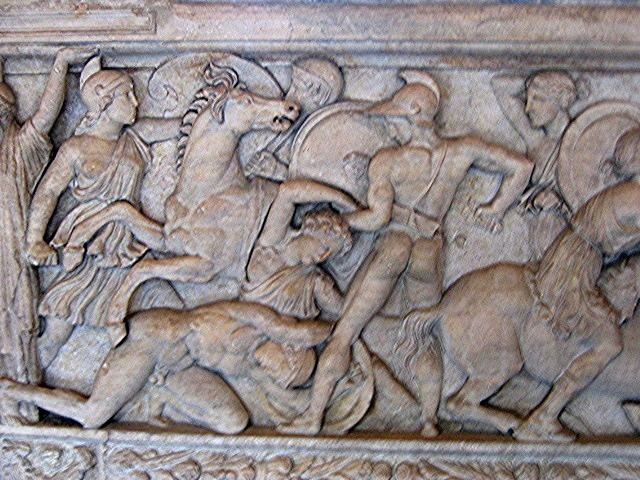 | ||
The role of women in ancient warfare differed from culture to culture. Warfare throughout written history mainly has been portrayed in modern times as a matter for men, but women also have played a role. Until very recently, little mention of these exploits was included in retellings of history in most countries, aside from the Amazons.
Contents
- 17th century BC
- 15th century BC
- 13th century BC
- 11th century BC
- 10th century BC
- 9th century BC
- 8th century BC
- 7th century BC
- 6th century BC
- 5th century BC
- 4th century BC
- 3rd century BC
- 2nd century BC
- 1st century BC
- 1st century AD
- 2nd century AD
- 3rd century AD
- 4th century AD
- References
Female deities, whose origins predate historical records, are present in most early cultures. Often they were portrayed as warriors, which signals a pervasive presence of women among such activities prior to a profound change in many human cultures after the adoption of agriculture as the typical sustenance (and which enabled protracted warfare with large armies).
Their influences, the roles of women rulers, and those of significant women, were retained in many of these cultures so strongly that no layers of new legends, ideals, and myths were able to obscure them completely.
The following is a list of prominent women who participated in warfare, which was assembled from the fragmentary beginning of written records to approximately 500 AD. Archaeological research provides more details and clues regularly.
